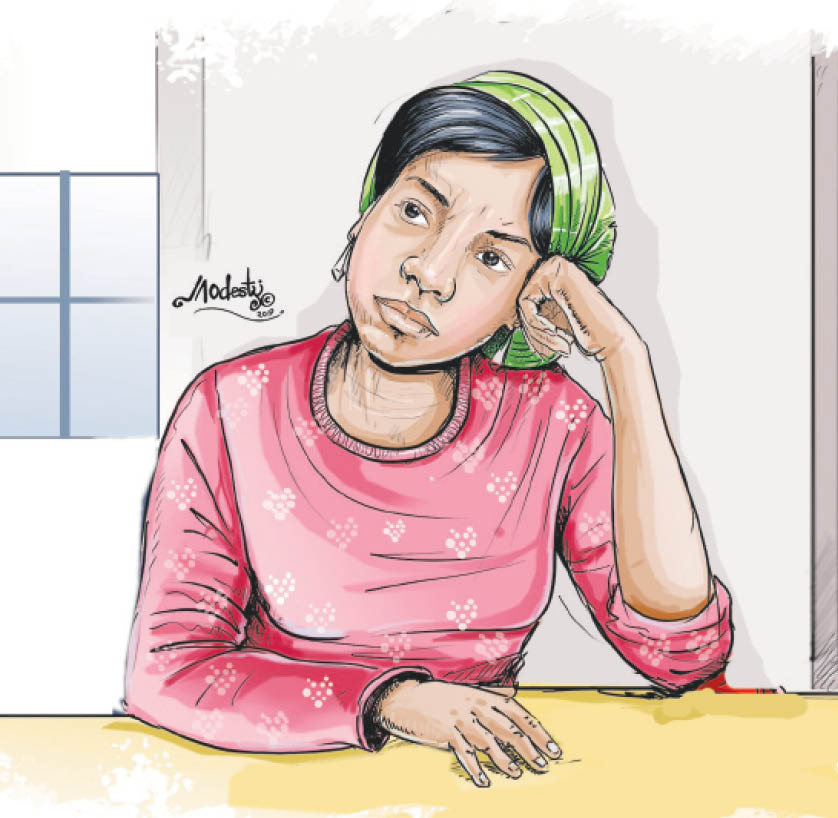What to know about treatments for fibroid
Adejoke, a single woman in her early 30s has large fibroids which make her look like an eight-month pregnant woman

Adejoke, a single woman in her early 30s has large fibroids which make her look like an eight-month pregnant woman, yet, she has no plan to remove them because of the many stories she has heard about the complications of fibroid surgery.
She said she is afraid of scar, bleeding, anaesthesia, infertility and regrowth of the fibroids after surgery as well as death.
- Without drugs, here are the alternatives to manage high blood pressure
- Protein from variety of food types, including red meat, key to preventing high blood pressure — Scientists
Many women in Nigeria have misconceptions about fibroids. This has made some of them not to seek medical care even for those who size and location affect their health and wellbeing.
Some years back, there was the misconception that fibroid affects only elderly women, although statistics reveal that fibroid is common among 70 to 80 per cent of women within 50 years age group.
Now, young unmarried women are also affected by fibroid due to estrogen and progesterone hormones, genes (family history), obesity, alcohol and use of oral contraceptives.
According to medical experts, fibroid tumors may start in women when they are in their 20s. However, most women do not begin to have symptoms until they are in their 30s and 40s.
Explaining further about fibroid, the Medical Director of Fibroid care centre in Lagos, Dr Abayomi Ajayi, urged women, regardless of their age, to be worried about fibroid.
He said they should visit a doctor when they notice that their quality of life or fertility is being affected.
He said a woman should also be concerned if the fibroid gives her so much pain, causes heavy bleeding or has a pregnant-like belly.
Expressing concern over how women leave their fibroid unattended, Dr Ajayi said there are some women who are in their 40s, they are not married and they have a large fibroid which they are not doing anything about.
According to him, women should not wait for their fibroid to grow very big, they need to understand they have options; there is no need to always do surgery or remove the uterus because of fibroid.
“In the fibroid care centre, we have seen some very huge fibroids. Many people are suffering in silence because they don’t want to operation on their fibroid.
“It is not every fibroid that you must treat. Some, you only monitor them and when it is obvious that it is not big, then why remove it? There are some fibroids that need to be removed and some don’t need to be removed.”
He noted that fibroid surgeries anywhere in the world have issues, and anything could go wrong. It is just that some places are more equipped to deal with issues that arise than others. The risk of anaesthesia scares some women.
Citing an instance, he recalled the case of a woman who went to the United Kingdom for her fibroid surgery and it was a successful one.
Thereafter she went shopping and it was during the shopping that she had pulmonary embolism (blockage of one or more arteries in the lungs because of a blood clot) and before they could get her to the hospital, she was dead.
“When treating fibroid, we do the patient more harm from surgery than good. If they are submucous in nature and we have to cut all through, they form scars and these scars might prevent implantation or pregnancy from taking place,” he said.
Sounding a note of caution to medical experts, the fibroid expert said it is not every fibroid that they must treat. Once the fibroid is not large or does not have symptoms, there is no point doing anything about it, he stated.
He said some things to consider before treating fibroid in women are:
“Look out for the age of the patient and the symptoms she has. Does she still want to have children? Where exactly is the fibroid located? Those are the things that will determine what the treatment should be or method to use.
“If a woman is 45 years and she does not want to have children anymore, her fibroid is submucous and her symptoms are heavy bleeding, any doctor that wants to remove the fibroid as the only option is not a good doctor.
“There are other ways this same patient can be treated, probably less invasive and the same result will be gotten.
“Therapy for fibroid should be tailor-made for the patient by looking at all options. The doctor should look at options such as hysteroscopic myectomy, high intensity focused ultrasound (HIFU), embolization.
“If the woman is near menopause, she could be given injectables until she reaches menopause and the bleeding stops. No point to rush to do surgery as it has many dangers.
He said some minimally invasive methods that aid fast recovery are endoscopy, laparascopy, hysterectomy and embolization.
“It requires no cutting and scar. Most of the time, these methods cannot stand alone as women generally have multiple fibroids in different locations.
